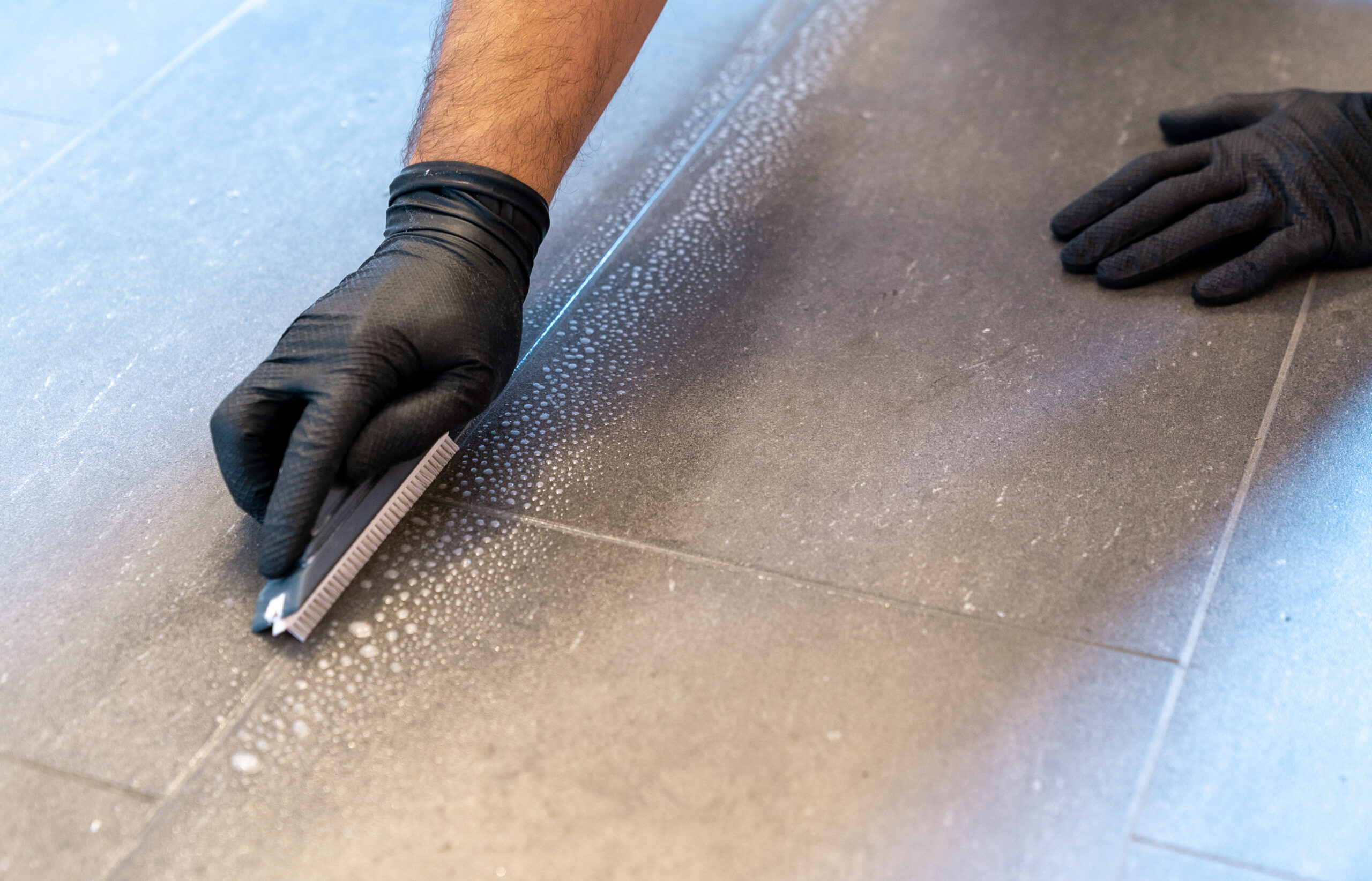While it might not be the most luxurious part of choosing tiles, grout plays a huge part in the overall look and feel of your home. By making a few mindful decisions, you can elevate your tile choices with just simple grout colours and textures.
Learn more about how grout plays a part in tile design and find out the best type of grout that you should be purchasing.
Choosing a Colour
You might not have thought about it before, but grout colour impacts the overall look and feel of your tiles by a lot. For example, if you’ve chosen a bright white metro tile for your shower, and you want to show off your creative personality, what not choose a mint green grout or maybe hot pink to peek out behind the tile? Yes, even grout comes in an array of neon colours!
This distinctive style is incredibly eye-catching and unique. Play around with mixing and matching grout to your tile colours for a mesmerizing shower wall or backsplash—you might be surprised by how drastically different it makes your room look. Not sure if it will look good once applied? You can experiment with swatches, or you can just look at the colour of the grout in the bag. It’s pretty much guaranteed that the colour of the grout will be the same once it’s applied.
Sanded or Unsanded
Sanded grout is held together with small particles of sand, as the name suggests. It’s budget friendly and easily accessible, and you can find it in many different colour options. Sanded grout is also incredibly durable and stands up under pressure. It’s great for bathroom and kitchen floors because it’s great for wide seams.
Unsanded grout is better for thin grout lines and is really great for glass tile. For vertical applications and smaller areas, unsanded grout is best. It also generally sticks better due to its low porosity. Grout sealing isn’t necessary when using unsanded grout, whereas sanded grout must be sealed.
The Best Way to Clean Grout
To clean grout, you can use commercial grout and tile cleaner, which does a fantastic job at diligently removing scum and mold from in between your tiles. If you choose this route, you’ll want to make sure that you wear gloves, and even a mask, while cleaning. There are also brushes and tile cleaning tools specifically designed to reach grout while also keeping it intact. These scrubbers can look like electric toothbrushes or round pads that gently get into the creases with ease.
If you prefer to go more natural and DIY it, then just mix baking soda, hydrogen peroxide, and a little bit of dish soap in a clean bucket and use a firm bristle brush, old toothbrush, or sponge to clean the grout lines. It’s best not to use acidic cleaners as they can dissolve the grout, but white vinegar instead of peroxide should be fine—just do not mix them! Choose one or the other just to be on the safe side. It’s also best to not use wax or oil-based cleaners when cleaning grout since they can leave a film.
Consider More Than Just Tiles
By making a few simple decisions, you can elevate your tile choices in a big way with grout colours and textures. Play around with different colours and maintain their fresh hues by properly cleaning your tile regularly.
If you’re ready to start your next design project, reach out to one of our professionals who can help you with choosing the best tiles and grout for your home.


